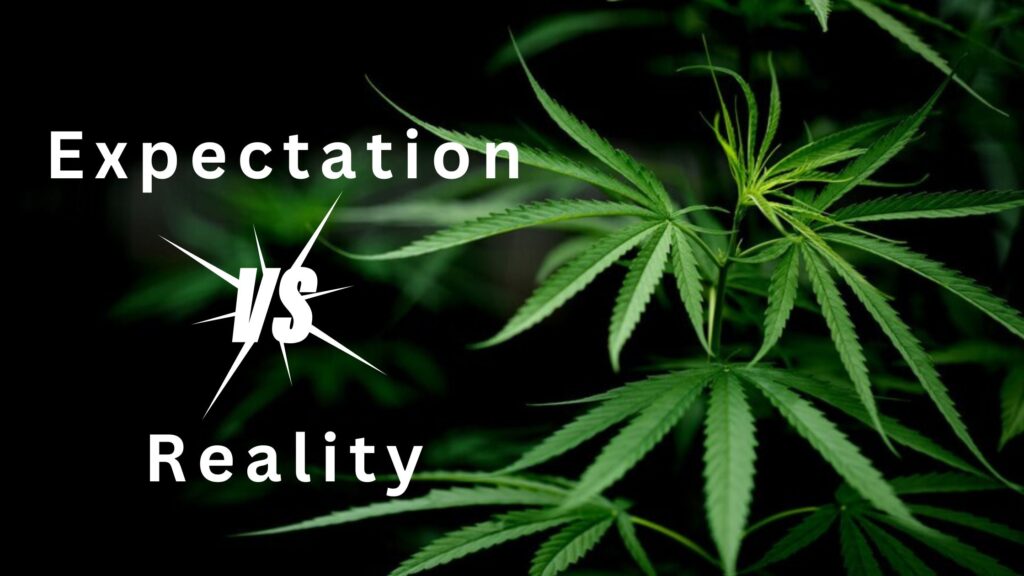Introduction
Hemp, a versatile and ancient plant, has attracted the world’s attention in recent years because of its promise as a sustainable and multi-functional resource. Hemp has been heralded as a game-changer in a variety of areas, including agriculture, textiles, medicine, and even environmental protection. However, as the excitement around hemp rises, it is critical to determine whether reality matches these aspirations. In this article, we will look at the expectations and facts about hemp, shedding light on both its benefits and drawbacks.
The Promise of Hemp as a Sustainable Crop
Expectation: Because of its capacity to grow quickly without the need for pesticides, herbicides, or excessive water, hemp is frequently touted as a highly sustainable crop. Its deep root structure also aids in soil erosion prevention, making it an appealing choice for regenerative agriculture and environmental conservation.
Reality: In general, hemp’s sustainability claims are well-founded. In comparison to traditional crops such as cotton, hemp uses less water and fewer pesticides, making it a more environmentally friendly option. Furthermore, hemp’s quick growth and ability to survive in a variety of climates add to its long-term viability. However, if suitable agricultural practices are not followed, large-scale farming may still have an environmental impact.
Hemp as a Fibre and Textile Source
Expectation: Hemp fibers are extremely strong and resilient and are frequently compared to cotton or even synthetic fabrics. Hemp is expected to revolutionize the textile business by providing a more sustainable alternative to traditional materials.
Reality: Hemp produces strong and resilient fibers, making it useful for hemp clothing with a variety of textile applications. However, the broad use of hemp textiles is fraught with difficulties. One significant impediment is the comparatively high cost of processing hemp fibers in comparison to well-established fibers such as cotton. Furthermore, developing a strong supply chain for hemp textiles necessitates investment and market demand, both of which may take time.
Hemp and CBD: The New Wellness Trend
Expectation: The wellness business has blossomed since the legalization of hemp-derived CBD (cannabidiol), with products ranging from oils and tinctures to lotions and edibles. CBD’s potential medicinal effects, such as pain alleviation, anxiety reduction, and improved sleep, are widely anticipated.
Reality: CBD research is ongoing, and while some trials have yielded encouraging outcomes, much remains unknown. CBD is not a panacea, and its usefulness varies according to individual characteristics and dose. Furthermore, the Hemp and CBD market’s lack of regulation has raised worries regarding product quality and consistency.
Hemp in Pharmaceuticals and Medicine
Expectation: Aside from CBD, hemp is thought to have a variety of additional therapeutic chemicals that have the potential to revolutionize the pharmaceutical sector. Researchers and supporters envision novel therapies for a variety of illnesses, including epilepsy, inflammation, and neurodegenerative disorders.
Reality: The medical potential of hemp is undeniably intriguing, but research in this area is still in its early stages. While encouraging results have been obtained, the creation of pharmaceutical-grade drugs derived from hemp would require extensive research, clinical trials, and regulatory approval. The procedure can be time-consuming and costly, resulting in a prolonged wait for new therapies to hit the market.
Hemp’s Legal Situation
Expectation: The legalization of hemp in several nations and areas has raised hopes for a thriving hemp economy that would provide employment and economic prosperity.
Reality: The legal status of hemp varies widely throughout the world. While some nations have embraced hemp production and its potential economic advantages, others have severe controls or outright prohibitions in place owing to its link to marijuana. For farmers and businesses, navigating the legal complications may be difficult, and politicians must strike a balance between regulation and encouragement of this multipurpose plant.
Hemp as a Climate Change Solution
Expectation: Because of its capacity to store carbon dioxide, rapid growth, and possible usage in sustainable construction materials, hemp is widely lauded as a viable answer for reducing climate change.
Reality: Hemp has the ability to favourably contribute to climate change mitigation initiatives. Because of its rapid development, it can absorb substantial volumes of CO2 from the atmosphere, making it an important instrument for carbon sequestration. Furthermore, hempcrete, a construction material constructed from hemp fibers and lime, shows promise as a low-carbon substitute for traditional concrete. Scalability, cost-effectiveness, and public acceptance will all play a role in widespread adoption.
Conclusion
Hemp has undeniable promise as a sustainable and multi-functional resource, with possible answers to environmental, economic, and health issues. However, we must moderate our expectations with an appreciation of the intricacies and obstacles associated with incorporating hemp into many businesses. As research and technology advance, more of hemp’s promises may become a reality, but it will take time, money, and dedication to responsible and ethical practices. Whether as a sustainable crop, a source of textiles and pharmaceuticals, or a weapon against climate change, the decisions we make now will decide hemp’s future.


Pingback: Hemp: Expectations vs. Reality | Cannabis in Sk...